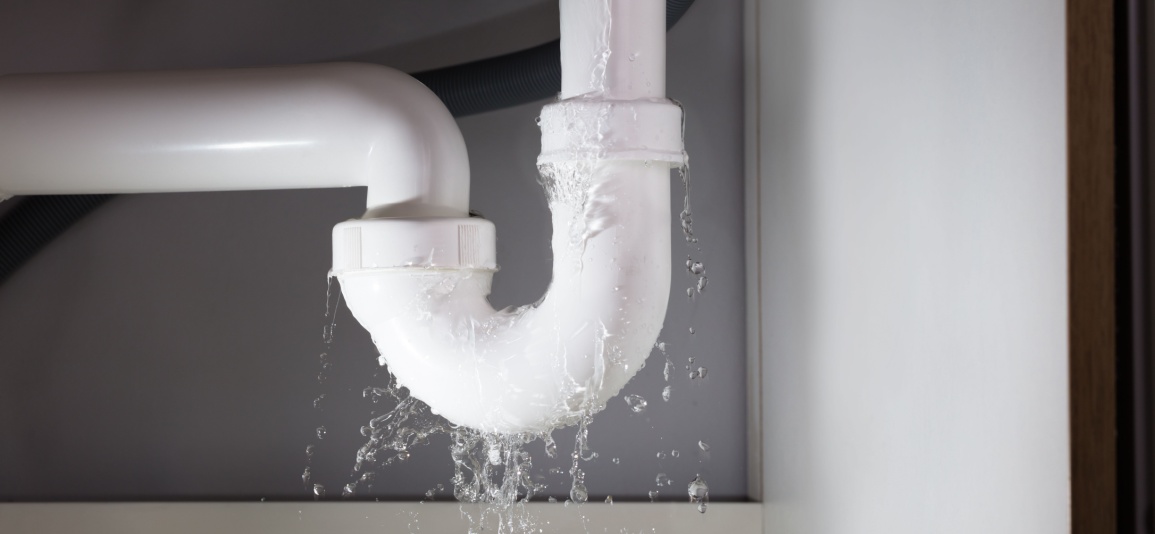Preventing Escape Of Water Claims
Risk ManagementArticleAugust 8, 2024
The financial and social costs of EoW claims cannot be overstated. Incidents that may seem minor in theory can cause millions of pounds worth of ruined property, alternative accommodation costs, and lost revenue. For example, a hotel recently experienced a sprinkler failure. Due to a lack of risk management planning and flow monitoring the sprinklers were not shut off for 45 minutes. This resulted in over £1 million in damages, leaving six floors out of action for several weeks.
To help you mitigate the risk of a major EoW event, we have provided some guidance on what you need to know below and in our recent Webinar.
What are the leading causes of escape of water claims?
- Cold weather which can cause water in exposed pipes to freeze and expand, resulting in the pipes rupturing
- The increase in construction of high-rise buildings. These structures require more piping and anything over three stories requires a pump system, which includes a tank in the cellar. The more infrastructure required, the greater the risk of something going wrong
- Poor workmanship caused by many subcontractors working onsite and a lack of experienced plumbers. The ‘just in time’ construction culture often leads to inadequate testing and quality checking of water infrastructure within a building.
- A move from copper to plastic pipes and fittings.
- Inadequate maintenance plans.
What is the overall impact of escape of water events?
- Increased workloads as a result of having to deal with the claim, i.e. filling in forms and gathering evidence.
- Reputational damage which can lead to difficulty in tenanting the property. This in turn impacts rental income.
- An increase in insurance premiums and a decrease in the market value of the property.
The impact on tenants includes:
- Emotional distress due to the loss of treasured and irreplaceable possessions.
- The need to find alternative accommodation which may be some distance away from their workplace and children’s schools.
- Disputes with neighbours.
- Health problems due to damp and mould.
How can escape of water events be prevented?
The sources of EoW events can be put into three categories:
- a) Infrastructure - includes the main water supply pipe, kitchen/bathroom fittings, and appliances.
- b) Operational - for example, poor maintenance regimes, water management planning, and flow monitoring.
- c) Behavioural – including people putting nappies, wipes, etc into the toilet and not turning taps off properly.
Managing the risk of an EoW event requires you to undertake a comprehensive review of water consumption across your property portfolio. Once this data has been collated, the information needs to be analysed to identify EoW hotspots. These conclusions can be backed up with claims history, allowing you to see common trends and rank EoW losses. You can then put together an EoW strategy and action plan to a) reduce EoW claims, b) improve water efficiency, and c) become a more sustainable organisation.
Your EoW strategy/action plan should include elements such as stakeholder maps that show who is responsible for identified EoW hotspots. Emergency response and maintenance plans must also form part of the strategy.
Finally, communication and training are essential to managing the risk of EoW events. For example, once the stakeholder map is created, conducting a workshop that brings all stakeholders together to agree on where responsibility for EoW hotspots and risk sits within the organisation can be helpful.
How do water leak detection systems work?
‘It is important to recognise there are many leak monitoring and detection systems available and several Internet of Things (IoT’s) solutions developed in recent years.
Leak detection, when managed appropriately, can assist with quick notification or shut off should a leak be suspected. However, it is not a silver bullet, nor would it be suitable for all commercial or residential properties. It can be challenging for an organisation to pull together and analyse the data required to create an effective EoW strategy and choose the best water leak detection system for its property portfolio. Zurich Resilience Solutions have expert risk engineers who can manage this process for you. They will help you mitigate EoW events and minimise any negative impact on your business and/or tenants and the wider community.
For more information about the services we offer and how they can help you with these issues please visit Building insite for the 21st century by Zurich and download our solution guide, or contact us at zrs.property.uk@uk.zurich.com
